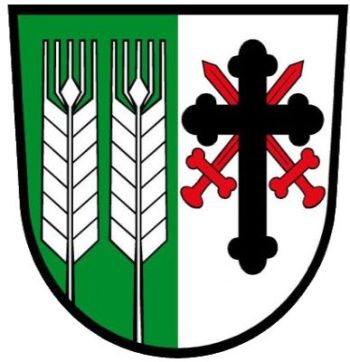Schönfelde: Difference between revisions
Jump to navigation
Jump to search
Knorrepoes (talk | contribs) m (Text replacement - "Literature :" to "'''Literature''':") |
Knorrepoes (talk | contribs) m (Text replacement - "{{media}}" to " {{de1}} {{media1}}") |
||
| Line 25: | Line 25: | ||
The two wheatears are taken from the 19th century seal of Schönfelde. They symbolise the importance of agriculture. The cross and swords refer to Gölsdorf and are based on a local monument for a Russian officer, who died in the village in 1813. | The two wheatears are taken from the 19th century seal of Schönfelde. They symbolise the importance of agriculture. The cross and swords refer to Gölsdorf and are based on a local monument for a Russian officer, who died in the village in 1813. | ||
{{ | |||
{{de1}} | |||
{{media1}} | |||
[[Civic Heraldry Literature - Germany|'''Literature''']]: MOZ | [[Civic Heraldry Literature - Germany|'''Literature''']]: MOZ | ||
Revision as of 11:54, 26 December 2022
This page is part of the German heraldry portal |
Heraldry of the World |
|
German heraldry:
|
Selected collector's items from Germany:
|
SCHÖNFELDE
State : Brandenburg
District (Kreis) : Oder-Spree
Incorporated into : 2001 Steinhöfel
Additions : 1974 Gölsdorf
Origin/meaning
The arms were officially granted on ?
The two wheatears are taken from the 19th century seal of Schönfelde. They symbolise the importance of agriculture. The cross and swords refer to Gölsdorf and are based on a local monument for a Russian officer, who died in the village in 1813.
Literature: MOZ


